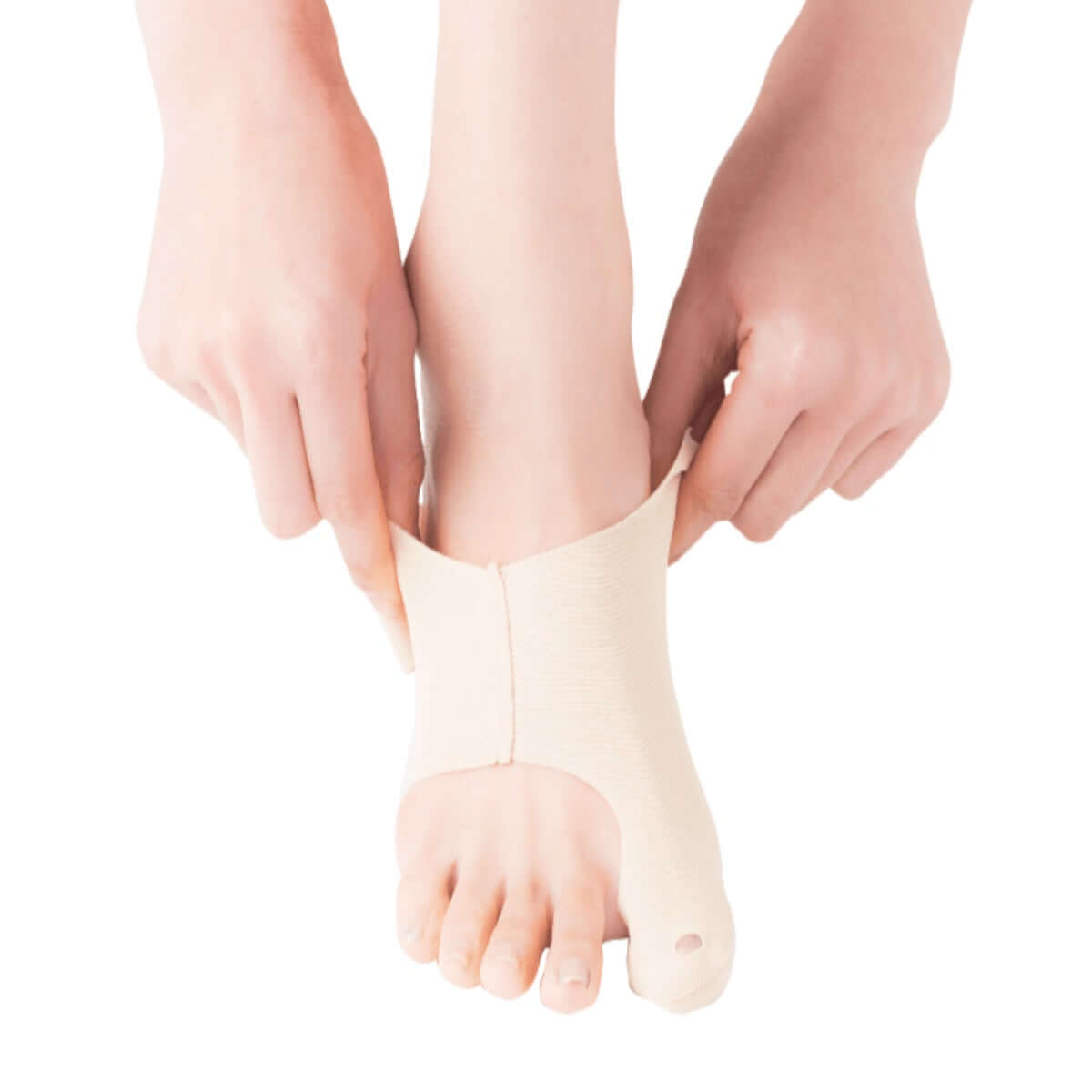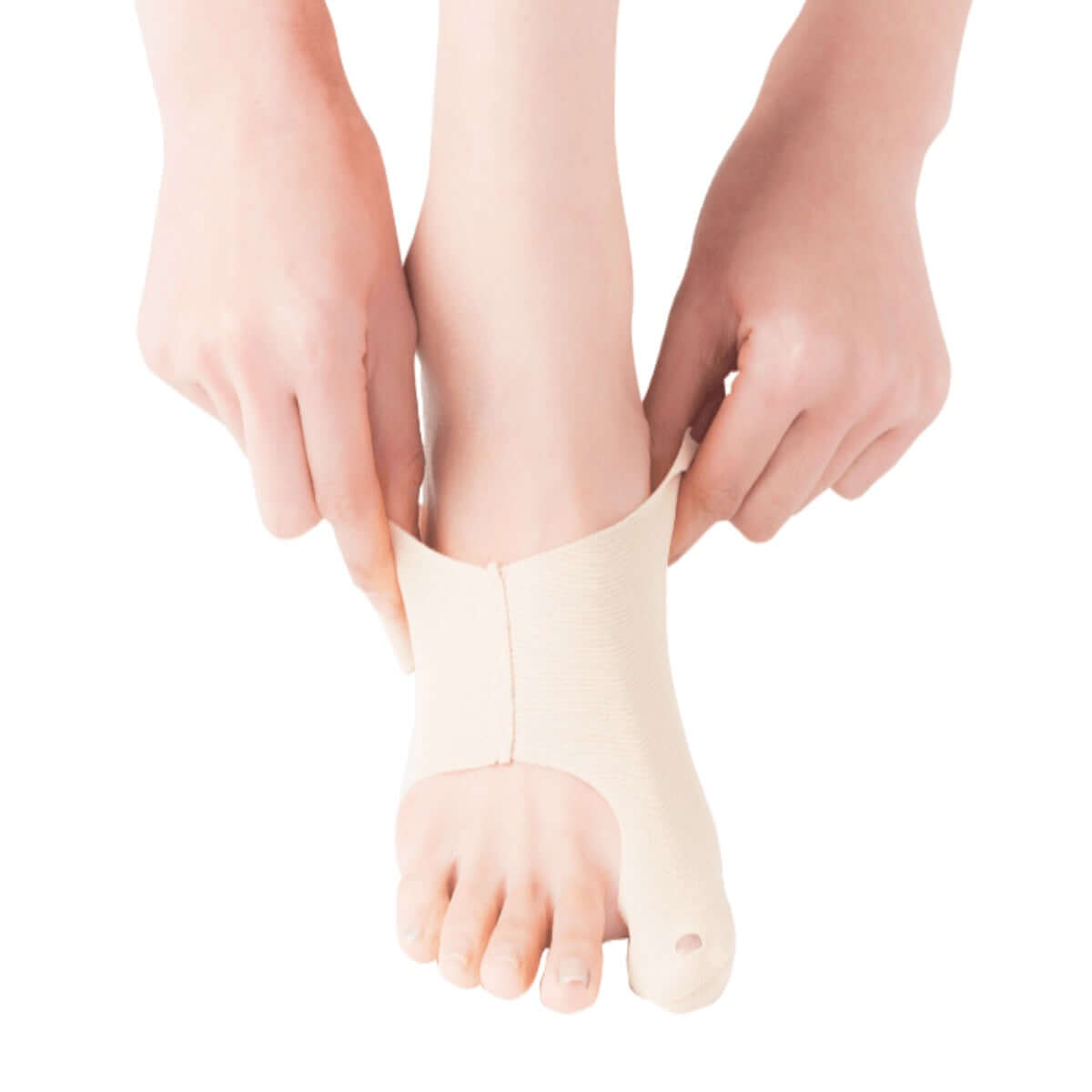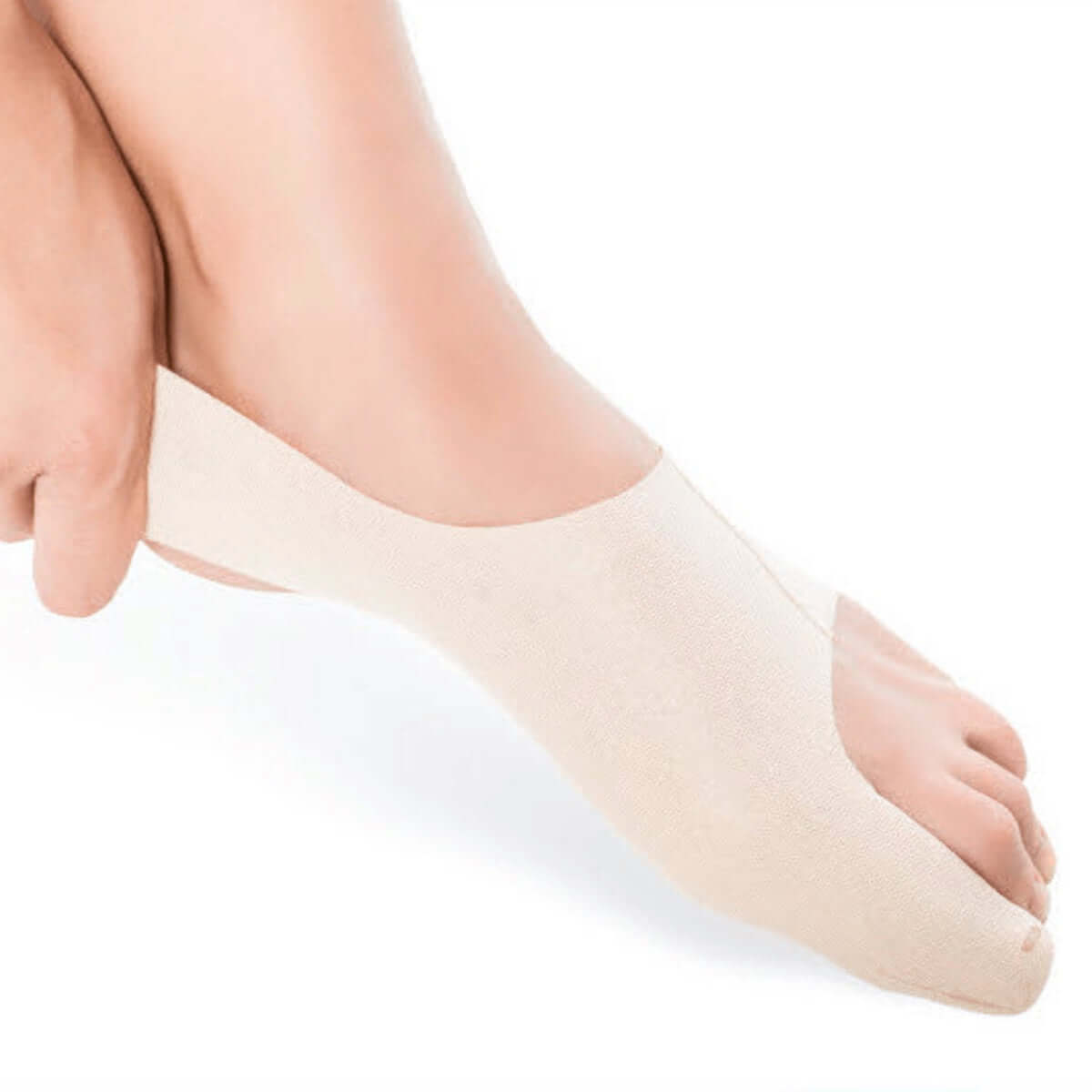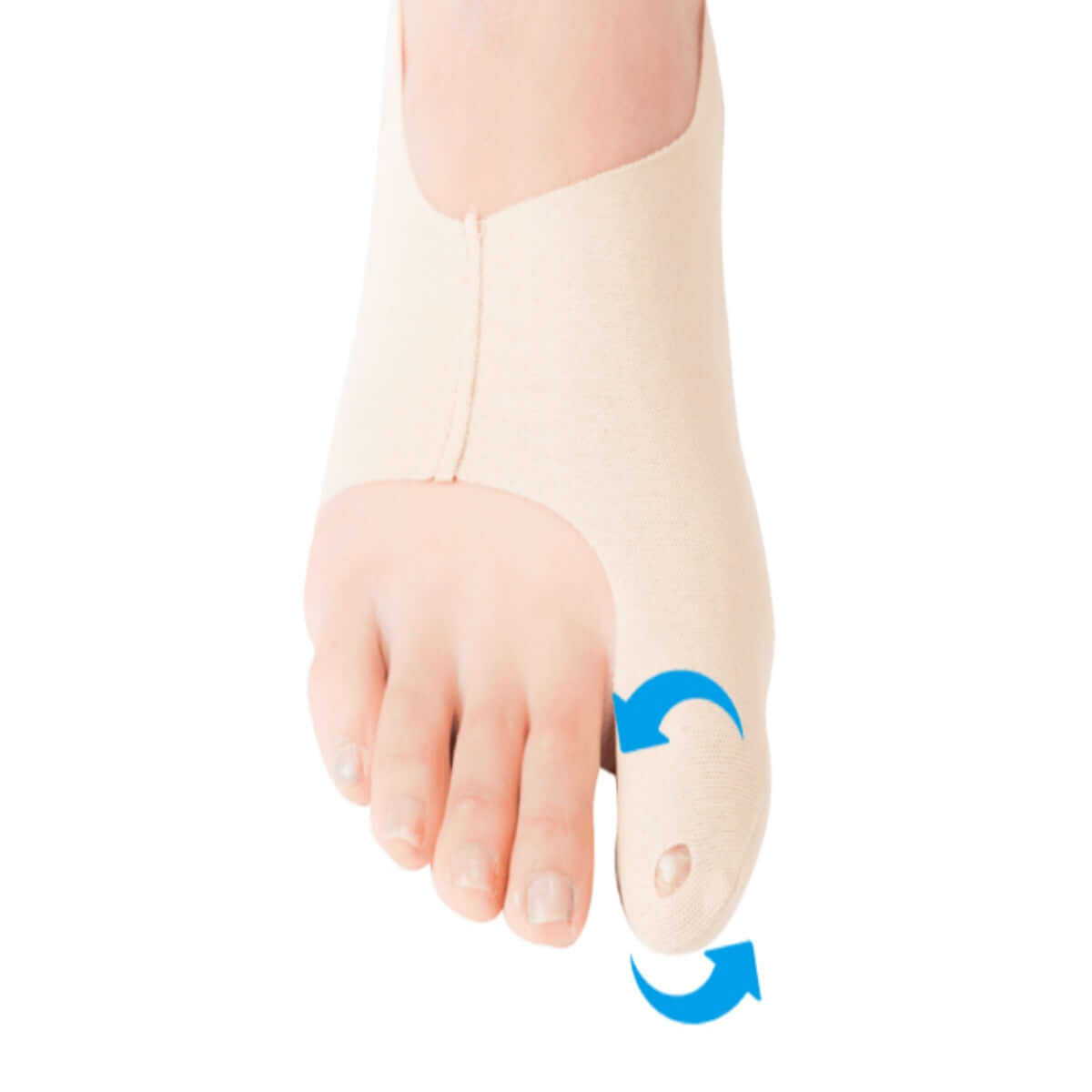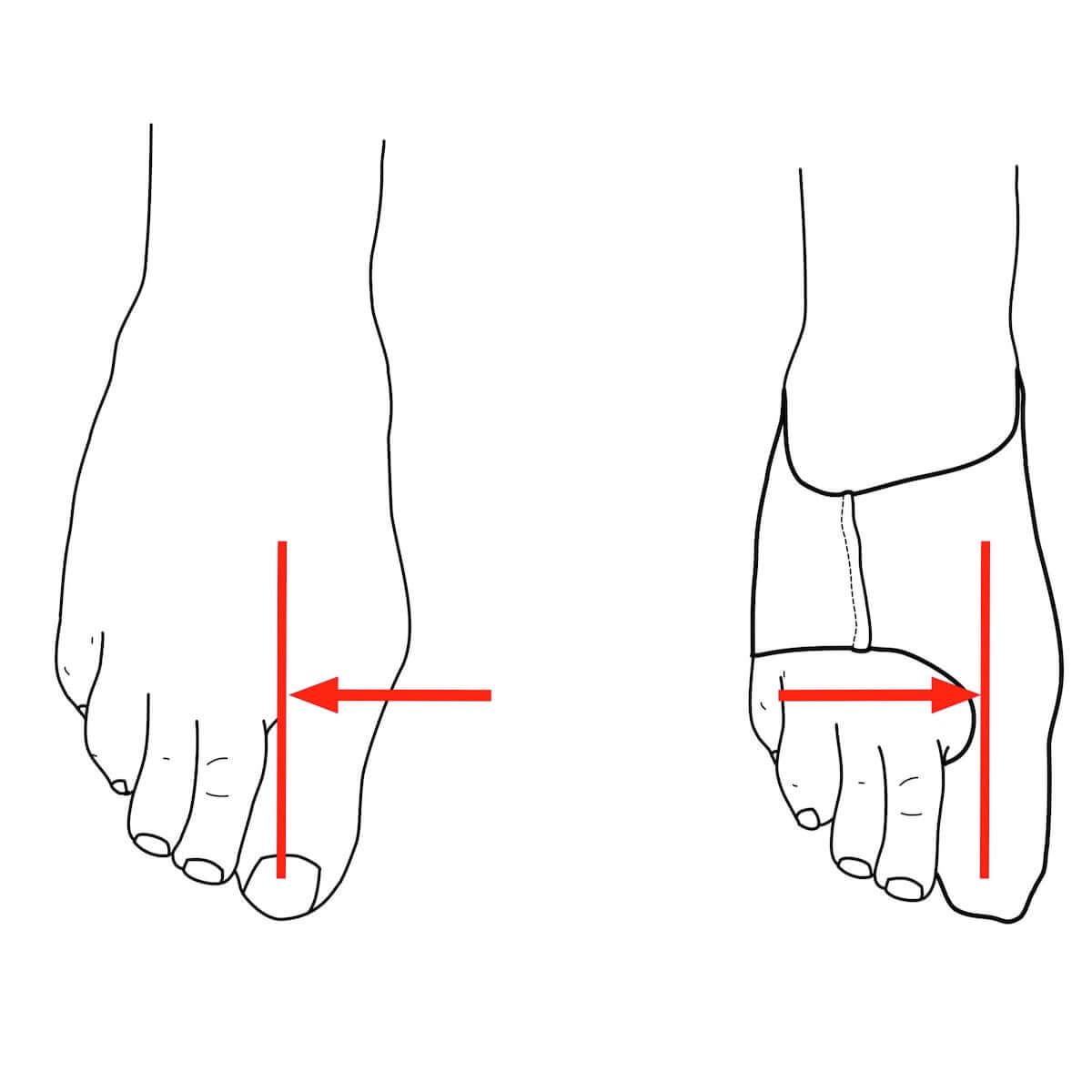Bunions are a common foot condition characterized by a bony bump that forms on the joint at the base of the big toe. This bump, which is actually an enlargement of the bone or tissue around the joint, can cause the big toe to angle inwards towards the other toes. This can lead to pain, discomfort, and difficulty walking.
Bunions are caused by a variety of factors, including genetics, arthritis, and certain types of shoes that don't fit properly. Women are more likely to develop bunions than men.
Treatment options for bunions include non-surgical methods such as wearing comfortable shoes and using padding or inserts to reduce pressure on the affected joint. In severe cases, surgery may be necessary to correct the deformity and alleviate pain.
If you suspect you have a bunion, it's a good idea to see a podiatrist (foot doctor) for an evaluation. They will be able to diagnose the condition and recommend the best course of treatment for you.
Bunion correctors are devices that are worn on the foot to help alleviate pain and reduce the progression of bunions. They work by realigning the toe and reducing pressure on the affected joint.
There are several different types of bunion correctors available, including splints, sleeves, and straps. Some are worn during the day, while others are worn at night.
Splints are worn over the toe and work by gently pulling the big toe back into its correct position. Sleeves are worn around the foot and work by cushioning and protecting the bunion. Straps are worn around the toe and work by keeping the toe in its correct position.
Bunion correctors can be effective in reducing pain and discomfort caused by bunions, but they do not cure the condition. It's important to note that they should be used in conjunction with other treatments, such as wearing comfortable shoes, using padding or inserts, and exercising to strengthen the muscles in the foot.
If you are experiencing pain and discomfort related to bunions, it is important to see a podiatrist for an evaluation. They can help you determine the best course of treatment for your specific condition, including whether or not bunion correctors would be helpful for you.
Bunion surgery, also known as bunionectomy, is a surgical procedure that is used to correct the deformity caused by a bunion. The goal of the surgery is to remove the bony bump and realign the big toe to its correct position.
There are several different types of bunion surgery, each with its own specific indications and risks.
The most common type of bunion surgery is called a bunionectomy. This procedure involves making an incision in the skin at the base of the big toe, removing the bony bump, and realigning the bones of the big toe. The procedure can be performed using either a traditional open technique or a minimally invasive technique.
Another type of bunion surgery is called an osteotomy, it involves cutting and repositioning the bone in order to realign the big toe. The procedure can be performed using either a traditional open technique or a minimally invasive technique.
Recovery time can vary depending on the type of procedure and the patient's overall health, but it typically takes several weeks to several months for the foot to fully heal. Physical therapy may be required to help the patient regain strength and range of motion in the foot.
It's important to note that surgery is usually reserved for cases where non-surgical treatments have failed to provide adequate relief from pain and symptoms. If you have a bunion and are considering surgery, it's important to consult with a podiatrist or an orthopedic surgeon for an evaluation, to determine if surgery is the best option for your specific case.
Bunion surgery is a highly effective treatment for bunions, but it's not the only option. There are several non-surgical alternatives that can be used to alleviate pain and slow the progression of the condition.
It's important to note that non-surgical treatments may not be as effective as surgery in treating bunions, but they may help manage the symptoms and slow the progression of the condition. It's best to consult with a podiatrist or an orthopedic surgeon to determine the best course of treatment for your specific case.
